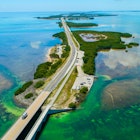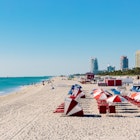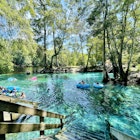The Florida Keys dangle off the southern coast of the state like a string of pearls floating in Florida Bay, linked together by the Overseas Highway, more formally known as US Rt 1. But that’s just the view from the land. Get out onto the water, all part of the Florida Keys National Marine Sanctuary, and you’ll discover an underwater playground.
The waters of the Keys are home to some 260 species of tropical fish, from toothsome barracuda to a rainbow of wrasses (plus sea stars, sea urchins, spiny lobsters, and a palette of shrimp species worthy of a Van Gogh painting). Throw in some turquoise waters, coral reefs, and plenty of underwater scenery – a giant underwater statue of Jesus, anyone? – and you’ve got a great snorkeling destination that rewards beginners and seasoned snorkelers alike.
Most visitors associate the islands with Key West, the last island in the chain that you can reach by car (technically closer to Havana than Miami) but Key Largo is the closest major island to the mainland, to the point that it can feel indistinguishable from it. There's still great snorkeling to be had though – here are the best places to mask up and dive in.
Snorkeling dos & don'ts in Key Largo
You can access Key Largo's John Pennekamp Coral Reef State Park by car, but to reach offshore spots around the island, you’ll need to come on a charter tour by boat. If you see a destination listed here that you like the look of, ask your charter captain if a visit is part of their normal tour, or if they charge extra to take you there.
Also note that some local snorkel sights have a relatively shallow bottom, so follow proper snorkeling etiquette and keep your feet and flippers as far from the coral as possible. Touching coral, or even the force of a strong kick, can irreparably damage the reef.
Explore John Pennekamp Coral Reef State Park from land
The most popular snorkeling destination in Key Largo, John Pennekamp Coral Reef State Park is just shy of 60 years old. The nation's first underwater park first opened in 1963, and it's still packing in tourists today. In fact, that’s why we include the park here – because almost everyone who comes to Key Largo comes to Pennekamp.
You can walk to two snorkeling beaches in the park, but you won’t be spotting any coral, although there will be fish darting around. This is sandy bottom shore snorkeling – great for younger kids, beginners, or those who aren’t confident swimmers. More experienced snorkelers will want to swim out to the remains of an 18th-century Spanish shipwreck (about 100ft offshore by the park), or try some more ambitious spots around Key Largo.
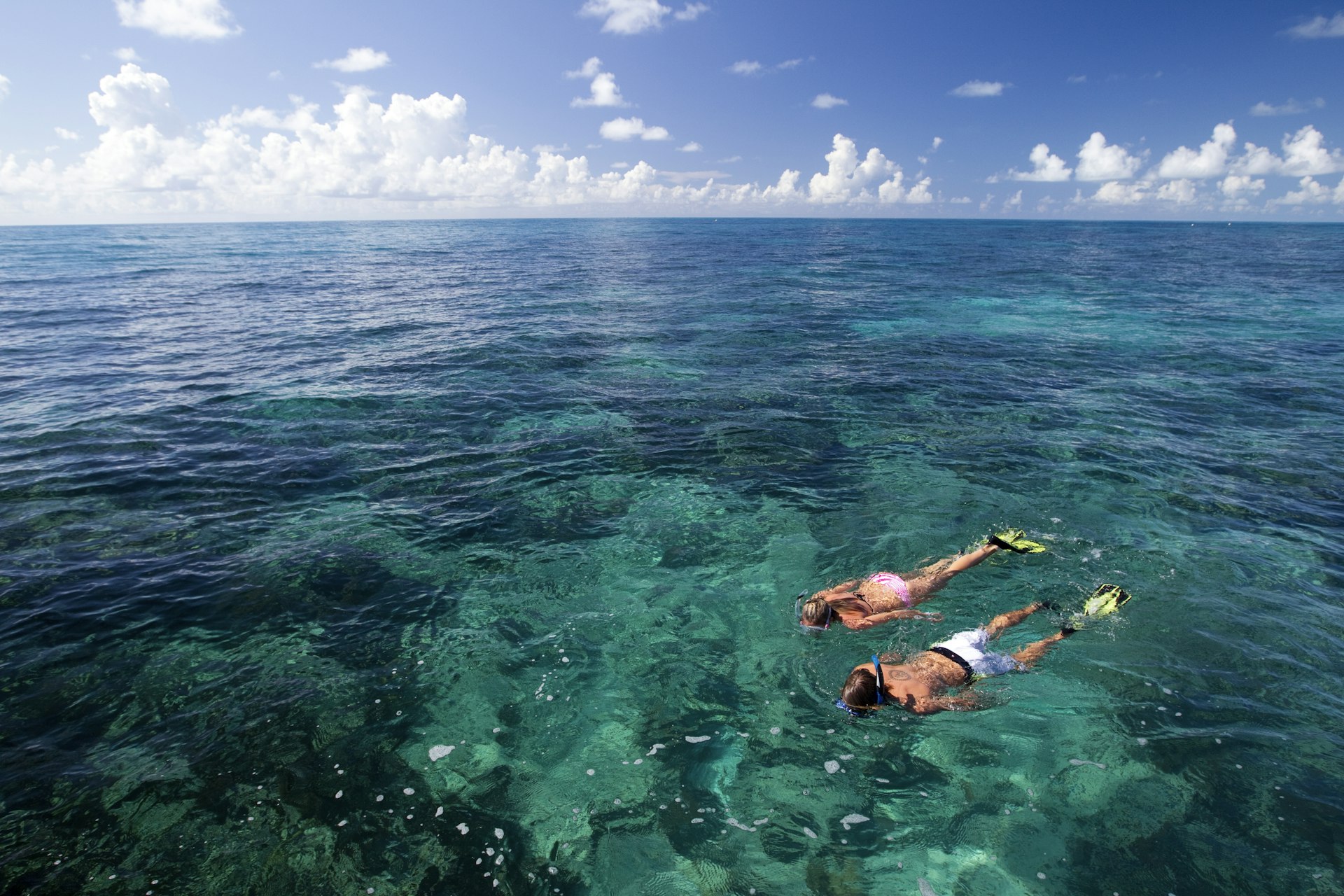
Break out with a boat tour at Pennekamp
You can’t swim out to the coral at Pennekamp, but the park operates 2.5-hour boat tours that get you out onto the reefs (adult/child $39/35). These tours can be crowded, but again, they’re a good option for beginners, partly because you can hire park staff members as snorkeling guides ($60, plus $15 for each additional person, up to a maximum of six snorkelers). You'll see a wide variety of sea life – some of the more iconic species spotted include parrotfish and spiny Caribbean lobsters.
Discover the secret of Sea Gardens
Okay, we admit that "secret" is an exaggeration, but Sea Gardens is one of the less-visited snorkeling spots off Key Largo, partly because this is a shallow reef area. The reef is also known as Mosquito Bank – although that’s obviously not quite as appealing as a name! – and it lies between Molasses Key and Key Largo. You’ll find some fish here, but the big draw is large clusters of soft coral, which bend in the tides like a grove of underwater trees.

Get wet at Dry Rocks
What’s in a name? This is an area of so-called "spur and groove" reefs – basically, coral canyons – and the tops of the formations can be exposed at low tide. What remains decidedly wet at Dry Rocks is a 9ft statue of Jesus known as the Christ of the Deep, intentionally placed here in 1965. The statue sits in about 25ft of water, and is often surrounded by barracuda and rays, both of which are docile around snorkelers and divers. The statue is a replica of the Christ of the Abyss sculpture near Portofino in Italy.
Slow down for the scenery at Molasses Reef
Molasses Reef is the most visited reef in the Keys, and a highlight of any snorkeling trip to the islands. The reef, perhaps most famous for its brain coral, is located about 6 miles offshore, and thus attracts a wider variety of bigger marine fauna, including a good number of sea turtles. The drawbacks? As mentioned above, Molasses Reef is popular – there are some 32 mooring buoys for snorkeling boats here.
The snorkeling here is also highly weather-dependent, and tour companies will be more cautious coming this far offshore in choppy conditions. Still, if you can find a willing captain and a clear day, this is some of the finest snorkeling in the Lower 48.
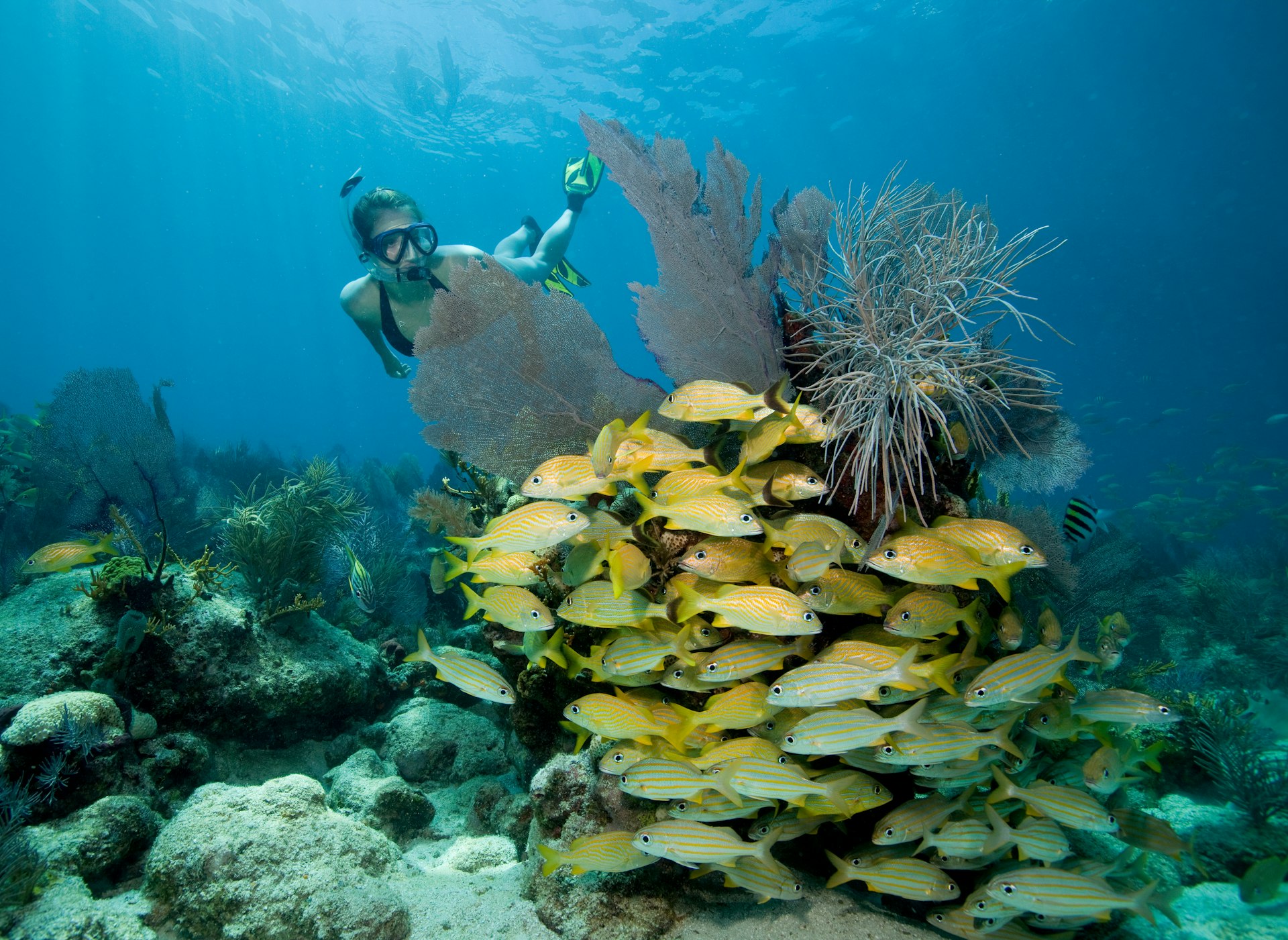
Enter the underwater world of Elbow Reef
Elbow Reef is a series of spur and groove coral formations located about 6 nautical miles southeast of Key Largo. The crooked reef has been the bane of many a ship, including the City of Washington, which ran aground and sank here in 1917. The 325ft-long underwater ruin (surrounded by a circle of debris) sits in relatively shallow water at around 25ft, and it serves as a hotel and way station for all sorts of sea life, from turtles to nurse sharks, making this one of the Key’s most snorkel-friendly shipwrecks.
Spot the snappers at Snapper Ledge
Many of the sites described here are good for both snorkeling and diving, and the shallow reef at Snapper Ledge is no exception, with coral from 15ft to 25ft. Get in the water here and you’ll see how the ledge earned its name – there are clouds of Yellowtail Snapper here, coruscating through the currents like a lemon-hued tornado. Also be on the lookout for giant boulder brain coral, nurse sharks, and moray eels, among other impressive marine life. The reef is about 7 nautical miles south of Key Largo.



